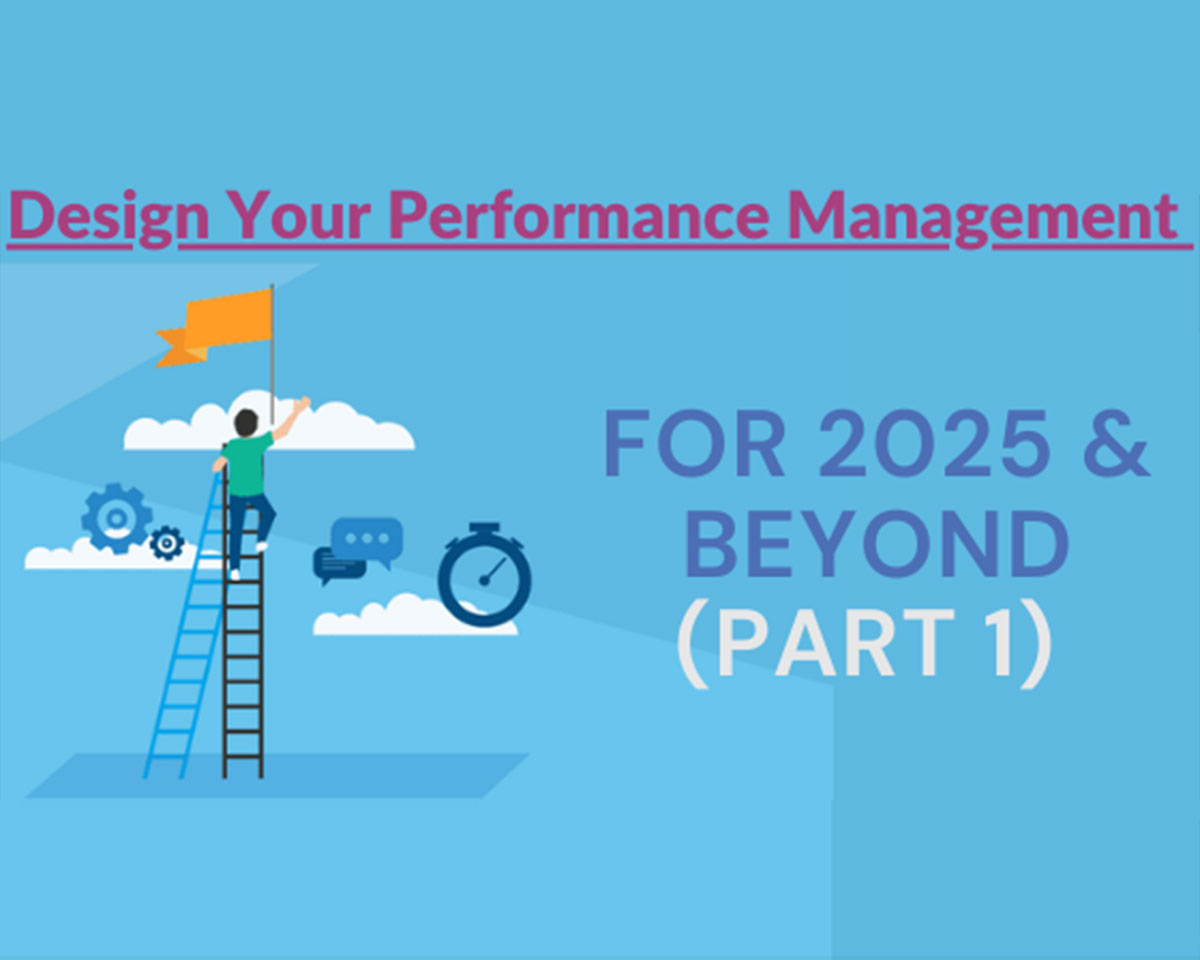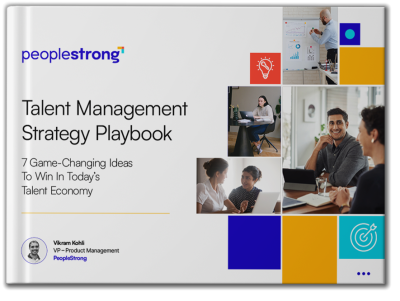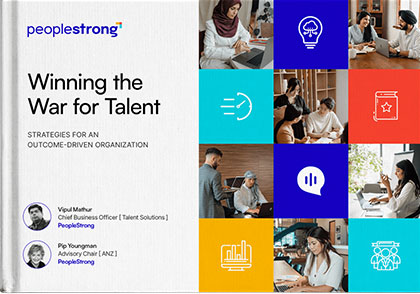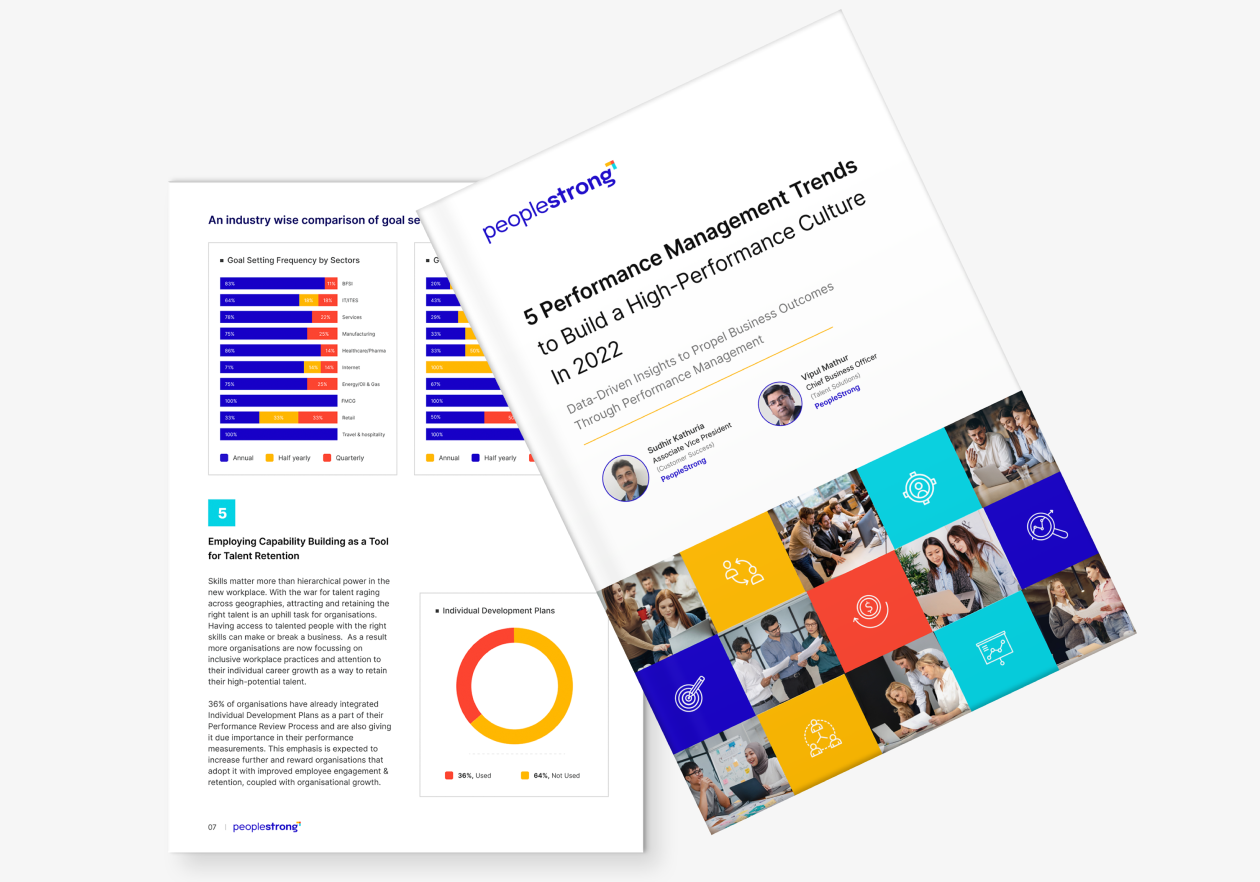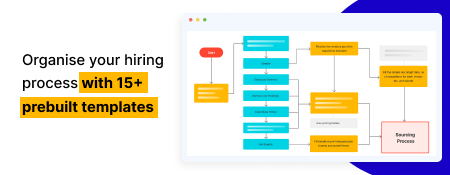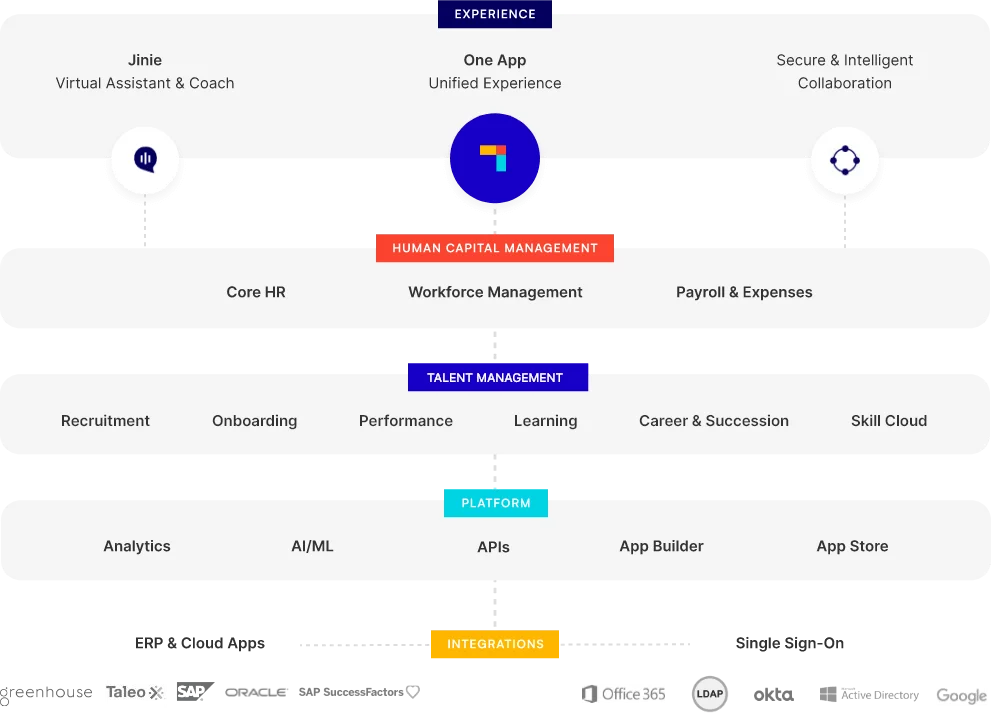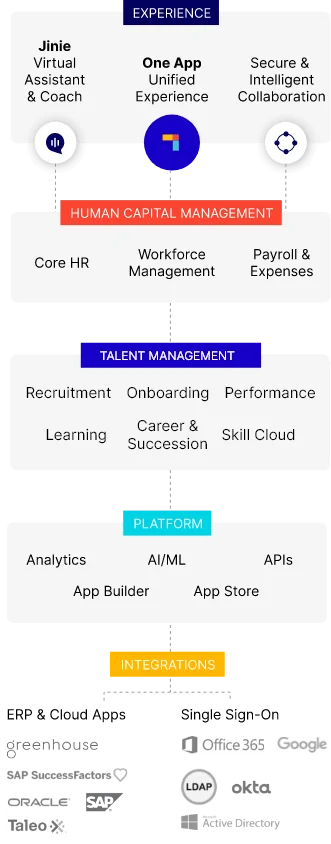Table of Contents
ToggleTable of Contents
ToggleThe Missing Design Thinking in Current Performance Management Process
While implementing Performance Management solutions for companies across different sectors, I always try to answer the following questions, multiple times with utter most honesty and unbiasedness:
- – “Why Companies Implement Performance Management (PM) tools”?
- – “And what is its core purpose?”
The more I converse with different HR managers who take care of PM processes, the clearer it gets to me that their core purpose is ONLY to get ONE data point – “Performance Rating”, to further facilitate the decision making of “who should get how much” from the portion of revenue/profit generated by the organization.

Only few organizations, CEOs and HR managers spend time thinking, reflecting, strategizing and move beyond the business of generating performance rating data. They re-define the core purpose of PM as the enablement process for:
- How people can define meaningful goals & KPIs that facilitate business growth.
- How to simplify the process and educate employees to re-define their goals better.
- How to simplify and standardize the process of performance reviews.
- How PM systems provide meaningful insights on productivity, engagement & performance to individuals, managers, business heads, and HR.
Most of the Performance Management HR process owners are not even aware of the different kind of the possibilities performance process can provide to their organizations. In this post, we will see how the design thinking is missing from various aspect of performance management processes and systems within an organization.
Missing Design Thinking in Goal-Setting
Design Flaw 1: Defining annual goals with single agenda, to collect rating data
Most organizations are still stuck with the annual KRA and KPI approach, where the KRA/Goal are defined with start date that equals to 1st day of financial year. And the due date of KRA/goals defined that equals to last day of financial year. The problem with this approach is goals are drafted and set keeping in mind just one purpose – “To collect the rating data” at the end of financial year. They are rarely near to the actual targets (which keeps changing) or gets updated based on internal and external business conditions.
Design Flaw 2: Goal approval going beyond L1/Direct manager
Many times, HR managers insist on pushing the process of approving the goals beyond the direct managers. Lets take an example; a typical L2 level manager has 5 managers under them, and each of those managers have further 10 working for him/her. In this way, the L2 manager will end up approving goals of 50 people. This process flows further delay completion of the goal-setting process. While L2 manager should be able to review their goals and quality of it, asking them to review and approve is unnecessary.
Design Flaw 3: Not enabling people to define measurable KPIs
Most KPIs employees define or assigned by HR manager are not measurable and too theoretical in nature. There is no start or target value but statements. And even if the target values are defined, they are defined at the start of financial year and are rarely updated according to internal or external business conditions. While most of the businesses are operating in an agile mode, the KPIs remain static and are never reviewed or updated during the financial year.
Adding to this, HRs spend far less time in educating individual contributors and manager how to set the right kind of goals. The most common thing we heard is “We are just enablers, its businesses who should be responsible for setting right kind of goals”. While the statement is correct, we forget to play the roles of enablers. Just giving employees the training documents and manuals does not complete the job.
Design Flaw 4: Mass assignment of Goals
What needs to be chased (Goal/KRA) and how you will measure it (KPI or Key Metric) is assigned to all at the start of the new financial year, based on role/band/grade. Sometimes it takes 3 months to finalize and assign goals. Research suggests that when you tell someone what needs to be chased, the likelihood of the person owning it and chasing to achieve it is far lesser. So you have time being wasted on goals that are less likely to be pursued.
Design Flaw 5: Defining goals just before the performance reviews
Another problem is most of the HR managers allot deadlines to define goals just before the start of performance reviews. This leads to backward looking performance evaluation, as people tend to define the KPIs, targets and goals in a manner that leads to 100% achievement or beyond and a rating of 5 out of 5 on each goal.
Design Flaw 6: Not empowering managers to give feedback on goals anytime, anywhere
HR manager don’t establish rituals among manager to do quick review on goals and provide feedback to them on real time basis. While the annual performance review provides the structured/formal process of providing feedback on goals, establishing an unstructured process of giving and receiving feedback, without it impacting compensation will enable
- Managers to be better coaches and
- Help employees understand how they are doing on their goals
Design Flaw 7: No established ritual to review goals every week/fortnightly/month
While the evaluation on goals from the perspective of compensation is done once a year, many HR manager who own PM process fails to establish review mechanism around goals on regular basis. While business reviews at top levels are conducted every quarter, how many times have you seen goals and targets being reviewed in the middle of a year by managers with their teams. When HR facilitate the review on goals every week/fortnightly/month, you are marrying an HR process with the business process.
Missing Design Thinking in Performance Reviews
Design Flaw 1: Making the performance process and templates too complex with multiple level of evaluations.
As humans we tend to make things complex by building a belief around us that we are intellectually superior. This happens specially as the organization becomes bigger; salespeople create complex sales plans, marketing love to create complex communication, operations team create complex metrices to track, CEOs and leaderships tend to speak in languages understood by few, and HR tends to create complex Performance Management process and succession planning that people employees away from.
In one of our prospective clients, HR manager had created 21 performance templates, each for different roles and many complex attributes for performance reviews. Templates were defined role wise with little difference. Here is a snapshot of same for the first 6 roles.
| Role | Evaluation on Goal and Weightage | Evaluation on Skills and Weightage | Evaluation on Behaviours & Values and Weightage |
| R1 | Yes – Weightage 60 | Yes – Weightage 30 | Yes – Weightage 10 |
| R2 | Yes – Weightage 50 | Yes – Weightage 25 | Yes – Weightage 25 |
| R3 | Yes – Weightage 50 | Yes – Weightage 20 | Yes – Weightage 30 |
| R4 | Yes – Weightage 50 | No | Yes – Weightage 50 |
| R5 | Yes – Weightage 50 | Yes – Weightage 50 | No |
| R6 | No | No | Yes – Weightage 50 |
The core problem is every year, you must create, maintain, and drive participation and completion on all 17 templates. And work increases if you want to perform evaluations 3 to 4 times a year.
Design Flaw 2: Evaluation scheduled at too many levels
Doing evaluations till 2 levels is fine but going beyond that doesn’t make sense. Let’s say an employee has done her self-review, after which the direct manager does the evaluation, then come the L2 manger. Till this level, its fine, but what if you decide on involving managers at level-3, level-4 or level-5. It does not seem to be practical. Even asking them to approve the rating given by appraiser or reviewer is not the right approach, unless the relevant appraiser or reviewer is not sitting with L3/L4/L5 level manager along with HRBP. But again, doing this will result in further increasing in time to close the performance reviews.
Design Flaw 3: Actual goal & KPI achievement data not reflecting in performance reviews
Most of the time, the actual goal and KPI achievement data resides in your business system like ERPs, CRMs and financial systems. But when the performance reviews take place, the KPI achievement data doesn’t reflect its true self, as most of the time, people end up entering exaggerated data– the reason is simple. If some data results in company deciding how much money I will earn in future, I tend to showcase best picture of my side, even at the cost of lie.
Design Flaw 4: Not defining skills, competencies, behavioural traits, and values for evaluation with respect to your organization’s culture and need
Most companies today do not create the skills and competencies based on different roles within the organization, they do not update them on regular basis. Sometimes businesses introduce a new role, but the skills and competencies relevant to those new roles are never added/update in the skill repository. Many companies do not take the pain to define those behaviour traits organization wide, based on the current culture and situation of the company.
Design Flaw 5: No linkage between Performance rating coming out of PM system and Compensation system
Most HR manager assume that the Performance Management system will also supports & take care of the compensation workflows and rules. Ideally, the performance management system journey stops with the final rating of the employee and that rating should be flowing to the Compensation system, where you can allocate budget to BU heads/Managers. And based on the rating data and performance feedback, BU heads/Managers can allocate the appraisal hike to employees as per the compensation rules defined in the system.
Design Flow 6: IDP plans/goals not integrated with your learning systems
Most of the IDP plans on which evaluations happen are not linked with the Learning systems. This results in manager evaluating on the IDP, not based on the actual achievement of the plan.
Design Flow 7: Not taking data driven decision on who should be put in PIP
Usually, HR takes the decision on who should be part of Performance Improvement Plan (PIP) based on rating data of current performance review. The last review which has happened might be one year back. As an HR manager, you don’t have enough data on the person who is going to be put in the PIP; as how he/she has performed in last 6 to 12 months or not. The decision is primarily taken based on the manager’s input. It might be the case that he/she is a wrong hire or role expectations are not set right. Unless you don’t have sufficient data in place, just making the decision based on this year’s rating is not the best method.
Design Flaw 8: Not giving enough data to manager on promotion recommendation
Most of the time during performance reviews, you ask for the recommendation from manager on the promotion of his direct report. The design flaw here is the manager does not have the sufficient data about employee past performance, when was the last time the employee got promoted and what is the kind of feedback the employee received in the past reviews from their peers, previous managers or external stakeholders etc.
Performance is a technology platform for companies that desire faster outcomes. We provide an intelligent management system that aims to take your performance process to the next level. We strive to bring your business performance closer to people performance. Get in touch with our executive to know more about Performance and how we can manage your processes better.
Related blogs
The two models for measuring performance - Objectives and Key Results (OKR) and Key Performance...
We live in a world that is driven by workaholics. It’s an oversimplification, but quite...
When HR sends a mandate mail to all employees for yearly goal setting and annual...
